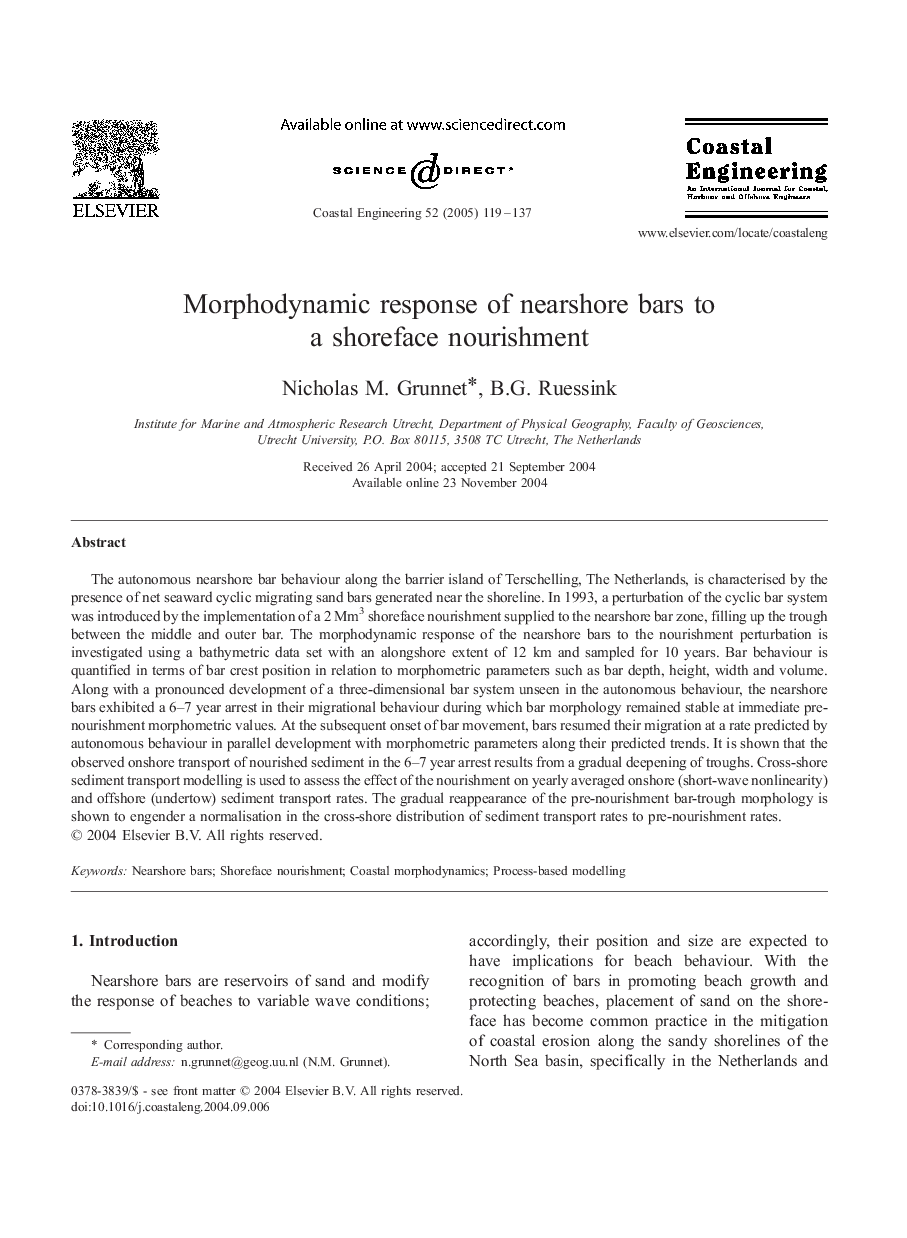| Article ID | Journal | Published Year | Pages | File Type |
|---|---|---|---|---|
| 10682010 | Coastal Engineering | 2005 | 19 Pages |
Abstract
The autonomous nearshore bar behaviour along the barrier island of Terschelling, The Netherlands, is characterised by the presence of net seaward cyclic migrating sand bars generated near the shoreline. In 1993, a perturbation of the cyclic bar system was introduced by the implementation of a 2 Mm3 shoreface nourishment supplied to the nearshore bar zone, filling up the trough between the middle and outer bar. The morphodynamic response of the nearshore bars to the nourishment perturbation is investigated using a bathymetric data set with an alongshore extent of 12 km and sampled for 10 years. Bar behaviour is quantified in terms of bar crest position in relation to morphometric parameters such as bar depth, height, width and volume. Along with a pronounced development of a three-dimensional bar system unseen in the autonomous behaviour, the nearshore bars exhibited a 6-7 year arrest in their migrational behaviour during which bar morphology remained stable at immediate pre-nourishment morphometric values. At the subsequent onset of bar movement, bars resumed their migration at a rate predicted by autonomous behaviour in parallel development with morphometric parameters along their predicted trends. It is shown that the observed onshore transport of nourished sediment in the 6-7 year arrest results from a gradual deepening of troughs. Cross-shore sediment transport modelling is used to assess the effect of the nourishment on yearly averaged onshore (short-wave nonlinearity) and offshore (undertow) sediment transport rates. The gradual reappearance of the pre-nourishment bar-trough morphology is shown to engender a normalisation in the cross-shore distribution of sediment transport rates to pre-nourishment rates.
Related Topics
Physical Sciences and Engineering
Engineering
Ocean Engineering
Authors
Nicholas M. Grunnet, B.G. Ruessink,
